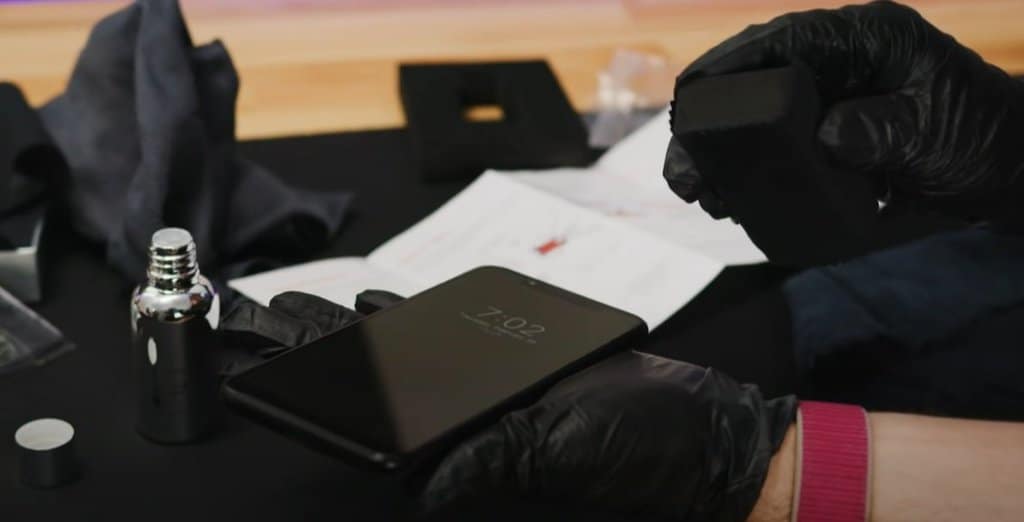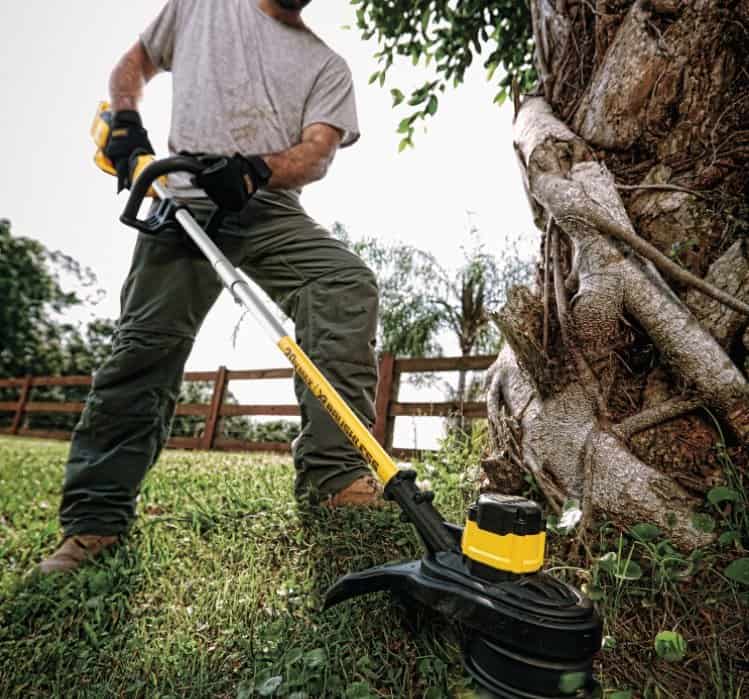From massive bricks built for Wall Street businessmen and the elite, to the touchscreen sensitive slivers of synced tech of today, the cellular phone’s evolution has seen some astronomical adjustments in the past thirty years alone.
Mobile phones have become more than just a mode of communication. The smartphones of today connect us to everything from bank accounts and online shopping carts, to family photo albums and the movies we watch and review.
Being that these expensive handheld devices have become so vital to our daily existence, it only seems natural that we would want to protect them from harm. And so we encase our phone screens in tempered glass, and wrap military-grade Kevlar cases around their hides, all while review sites drop-test new phones and carriers offer us extended warranty plans.
So how about about protecting smartphones with a ceramic coating? Will a DIY nano-coating product work as intended and protect a screen against scratches and cracks, or will it render a touchscreen useless?
If it is safe to use, are there any additional benefits that a ceramic coating can offer that traditional methods of smartphone protection fail to address? What about coating tricking areas, like foldable screens and adaptive camera lenses?
These are the sort of oddball inquiries we occasionally get here at AvalonKing, and today we’ll be answering all of your ceramic coated smartphone questions, along adding a little bit of nerdy info to the mix, for those of you who are still unsure as to how exactly a cell phone functions.
Daddy, Where Do Touchscreens Come From?

Photo Credit: ABP News Facebook
They say that some of the greatest creations come from what legendary painter and avid perm-aholic, Bob Ross, liked to refer to as “happy little accidents,” and the same can be said for the modern touchscreen.
While smartphone screens were the last thing on anyone’s mind way back in 1952, the accidental discoveries that came out of Corning Glass Works that year would eventually evolve into the touchscreens we use today.
As the story goes, an accident-prone chemist was trying to heat a sample of glass to 600°C in a furnace, when a bad thermostat caused the oven to hit a whopping 900°C. The dismayed scientist opened the door, only to discover that the glass had neither melted nor cracked. He then proceeded to accidentally drop the glass on the floor (we told you this guy was clumsy), only to witness the sample bounce instead of break. Synthetic glass ceramics had unintentionally been born, and the world would never be the same.
A decade later, Corning released its revised, consumer-ready version of the glass, complete with a signature nameplate that is still used to this day: “Gorilla Glass.” Chemically strengthened via a piping-hot 300°C potassium nitrate bath, this new and improved Gorilla Glass would go on to give automotive, industrial, aquatic, and architectural installations, the ability to withstand up to 100,000 pounds of pressure per single square inch.
However, it would be many years before Corning’s scientists would be able to configure the Gorilla Glass grid so that it could contain capacitive touchscreen tech. This proved to be no easy task either. In order for touchscreen development to reach the mainstream, decades of scientific and engineering based research from an array of countries, universities, and manufacturing firms had to first be implemented.
But even then, it was not a true touchscreen as we know it today. In its earlier incarnations, touchscreens required a stylus to function, which if you think about it, would be an absolute atrocity to use in modern everyday life.
The big breakthrough came in the late 1990s, when a University of Delaware graduate student by the name of Wayne Westerman, published a doctoral dissertation on what would later become referred to as the “modern capacitive touchscreen.”
While researching ways to help the handicapped better communicate, Westerman discovered that by applying transparent layers of conductive substances like indium tin oxide in a crisscross pattern, you could force glass to store tiny electrical charges, and therefore make something like a touchscreen respond to fingertip inputs. Needless to say, the guy would go on to become quite wealthy, and the world would reap the benefits.
Wait, Don’t All Modern Smartphones Come Ceramic Coated Straight From the Factory?

As videos and images of products like the curved screens found on newer versions of the Samsung Galaxy highlight the strengths that Gorilla Glass provides as a form of scratch-resistant ceramic smartphone glass, another mobile device manufacturer has a completely different idea about what best protects tech products.
When the iPhone 12 launched on October 23rd, 2020, Apple fans received a form of mobile device protection that the brand had never offered before; something that it referred to as: “Ceramic Shield.” Upon closer inspection, this protectant did not utilize surface coatings at all, but relied upon integrated nano-ceramic crystals within the glass surface of the touchscreen itself for protection.
This sounds great and all, but as reviews of the iPhone 12’s “Ceramic Shield” clearly illustrate, “… those new

Photo Credit: JerryRigEverything/YouTube
Apple doesn’t mention much about scratch resistance with this particular smartphone glass either, just drop resistance and overall toughness ratings. Over the past year, independent tests have gone on to prove that this “ultra-strong” layer of nano-ceramic crystalline glass still scratches when exposed to a Level 6 pick on the Mohs hardness scale. This means that a 9H-rated nano-ceramic coating, like Armor Shield IX, has a higher scratch resistance rating than Apple’s “Ceramic Shield.”
Nano-Ceramic Coatings and Smartphones

Photo Credit: Cape Town Guy/Facebook
Regardless of what kind of modern, ceramic-infused glass surface your smartphone relies upon, they almost all share the same protectant: Oleophobic coatings. This oil repelling magic sauce is what makes a new smartphone resistant to fingerprints, and as you shall soon see, a real bitch of an issue for ceramic coatings like Armor Shield IX.
Before delving too deep into the ceramic coating side of things, it is worth noting that the 9H pencil hardness scale remains a universal form of scratch resistance measurement for screen protection film manufacturers. But being that ceramic coatings are self-healing (minor scratches will typically fade when heat from buffing is applied), their usage far exceeds that of traditional screen protectors.
This means that ceramic coatings have the potential to be very useful on old phones, where the stock oleophobic coating has begun to wear thin. Sure, that oleophobic coating reinforced Gorilla Glass is great at first, but the more you touch it and disinfect it, the faster that oleophobic layer deteriorates.
“The ceramic coating itself won’t show surface scratches or imperfections, and so far it doesn’t!”
-Linus Tech Tips
In contrast, ceramic is a much more resilient material. It is also a much slower conductor of heat than glass, so a ceramic coated phone sitting in the sun will not overheat nearly as quickly. The same goes for liquids, as the hydrophobic properties within a nano-ceramic coating force water to bead and roll away.
And while fingerprints will still collect on a ceramic coated smartphone, microfiber decontamination wipe-downs are far easier when surfaces have been protected by a silicon-dioxide-infused layer of protection.
So while the average smartphone may be far less porous than say, a painted plastic car bumper, a glass surface on a mobile device will still play well with ceramic coating products. However, these additional layers of protection will only be effective when mobile phones receive the preparation and care that they require.
Quick Tip: Since the backsides of most modern smartphones materials packs a metal, plastic, or glass construction, the entire phone itself should respond favorably to a ceramic coating. Just note that rubberized, or silicone cases are typically not hard enough to receive a nano-ceramic coating, so unless it’s a hard shell, don’t sweat coating your phone’s case.
Things to Beware of When Ceramic Coating a Smartphone

To obtain a fingerprint-resistant surface, and a superior layer of nano-ceramic coating protection, one must go beyond just having a clean smartphone surface prior to application.
The biggest issue people run into when ceramic coating a smartphone, is that aforementioned oleophobic coating. Since most modern smartphones come with an oleophobic coating already applied to the touchscreen, the installation of a nano-ceramic coating on new phones can be quite a challenging if it is not first stripped away with an isopropyl alcohol (IPA) spray. It may take a few rounds of alcohol and some elbow grease with a clean microfiber cloth, but the coating will eventually begin to disappear.
The same approach can be applied to removing oil build-up on older phones. Remember, if the ceramic coating can’t stick to a completely decontaminated surface, you won’t see much in the benefits department, and it will more than likely begin to haze and fail rather quickly.
“Touchscreen responsiveness is still fine with the ceramic coating… it is indiscernible.”
-Linus Tech Tips
Decontamination complete, coat the phone, carefully following the instructions provided by the manufacturer. After that, it’s on to allowing the coating to cure for at least 48 hours in an undisturbed location that is well away from contaminants and moisture.
Bada-bing, bada-boom. Done.
Your smartphone’s screen clarity is going to remain top notch once it has been ceramic coated, as nano-ceramic coatings are completely transparent. And no, it will not hamper tactile touchscreen responsiveness or performance.
Quick Nerd Note: We’ve seen some poorly orchestrated attempts at ceramic coating smartphones in our day, but the biggest bungles had to be in 2020. It was that year that a YouTuber called “Linus Tech Tips,” decided that it would be wise to shoddily decontaminate a smartphone, and then apply a layer of Armor Shield IX.
The YouTuber further screwed things up, by testing Armor Shield IX’s resiliency levels after giving the coating just one day to cure, instead of the required 48 hours. Needless to say, the test, while interesting in theory, was poorly executed, and thus received a significant amount of negative feedback.
Parting Shots

Touch-sensitive screens work on a highly complex, extremely sensitive level, and require specialized care. So we fully understand why people might be hesitant to ceramic coat their smartphones.
But while modern smartphones, like the iPhone by Apple, may have their own proprietary line of specialized protectants, these are a far cry from the self-healing smartphones we were promised years ago. And while Coronavirus experts suggest disinfecting your phone every time you wash your hands, safe smartphone handling goes well beyond just battling the bacteria on your skin.
Our advice? Read or watch a few independent tests of smartphone protectants, then get yourself the hard-shell smartphone case that best suits your needs, and pair it with a quality screen protector. After that, go ahead and install a layer of Armor Shield IX nano-ceramic coating on top of everything, but only after decontaminating and removing the oleophobic coating with AvalonKing’s IPA Ceramic Prep Spray.
This multi-tier approach to smartphone protection will keep things like fingerprints and smudges from forming, reduce the risk of surface scratches, and still prevent the risk of shattered screens and cracked body parts from developing.












